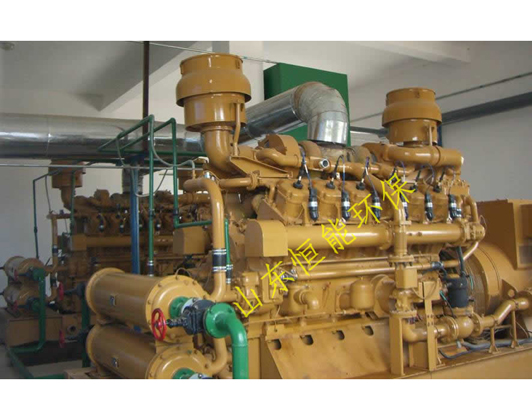大量的研究證明,污水中的氮是導(dǎo)致水體富營養(yǎng)化的主要原因之一。常規(guī)的污水處理技術(shù)主要去除有機(jī)物和懸浮固體,對氮的去處效率較低。許多國家對排放污水中的氮含量都做了限定,并要求污水處理廠達(dá)到除氮的要求。
A large number of studies have proved that nitrogen in sewage is one of the main causes of water eutrophication. Conventional wastewater treatment technologies mainly remove organic matter and suspended solids, but the removal efficiency of nitrogen is low. Many countries have limited the nitrogen content in the sewage, and require the sewage treatment plant to meet the requirements of nitrogen removal.
污水脫氮的技術(shù)可分為物理法�、化學(xué)法和生物法���。相對而言�,生物脫氮技術(shù)投資少��、運(yùn)行操作簡單�、產(chǎn)生的二次污染物較易被處理,因此生物脫氮方法被廣泛應(yīng)用����。
The technology of wastewater denitrification can be divided into physical method, chemical method and biological method. Relatively speaking, biological nitrogen removal technology has the advantages of less investment, simple operation and easy treatment of secondary pollutants, so biological nitrogen removal method is widely used.
活性污泥法脫氮
Nitrogen removal by activated sludge process
活性污泥法脫氮的原理是通過創(chuàng)造好氧和缺氧條件,經(jīng)過硝化和反硝化兩個步驟�����、利用硝化菌和反硝化菌等一些專性菌實現(xiàn)氮形式的轉(zhuǎn)化�����?���;痉椒ㄓ芯哂卸嗉壩勰嗷亓飨到y(tǒng)的傳統(tǒng)生物脫氮方法和只有一個污泥回流系統(tǒng)的單級生物脫氮方法。單級生物脫氮法可認(rèn)為是對傳統(tǒng)生物脫氮法的改進(jìn)�,有A/O法、Bardenpho工藝等多種形式��,氧化溝����,SBR法等具有脫氮功能的工藝也屬于單級生物脫氮系統(tǒng)。
The principle of nitrogen removal by activated sludge process is to create aerobic and anoxic conditions, through two steps of nitrification and denitrification, and use some specific bacteria such as nitrifying bacteria and denitrifying bacteria to realize the transformation of nitrogen form. The basic methods include the traditional biological denitrification method with multi-stage sludge return system and the single-stage biological denitrification method with only one sludge return system. The single-stage biological nitrogen removal process can be considered as an improvement on the traditional biological nitrogen removal process, including a / O process, bardenpho process and other forms. The oxidation ditch, SBR process and other processes with nitrogen removal function also belong to the single-stage biological nitrogen removal system.
1.傳統(tǒng)生物脫氮工藝
1. Traditional biological nitrogen removal process
傳統(tǒng)的生物脫氮流程是三級活性污泥系統(tǒng)����,在此流程中,含碳有機(jī)物的氧化和含氮有機(jī)物的氮化�、氨氮的硝化及硝酸鹽的反硝化分別在三個構(gòu)筑物內(nèi)進(jìn)行,并維持各自獨(dú)立的污泥回流系統(tǒng)�����。曝氣池和硝化池均要進(jìn)行曝氣維持好氧狀態(tài),反硝化池則要維持缺氧狀態(tài)����,不進(jìn)行曝氣,只采用緩速攪拌使污泥處于懸浮狀態(tài)并與污水保持良好的混合�����,反硝化所需碳源采用外加甲醇/葡萄糖的方法���。
The traditional biological nitrogen removal process is a three-stage activated sludge system. In this process, the oxidation of carbonaceous organic matter, nitrification of nitrogenous organic matter, nitrification of ammonia nitrogen and denitrification of nitrate are carried out in three structures respectively, and independent sludge return systems are maintained. Both aeration tank and nitrification tank should be aerated to maintain aerobic state, while denitrification tank should maintain anoxic state without aeration. Only slow stirring is used to make sludge in suspension state and keep good mixing with sewage. The carbon source for denitrification is methanol / glucose.
這種流程的優(yōu)點(diǎn)是好氧菌�����、硝化菌和反硝化菌分別生長在不同的構(gòu)筑物內(nèi)�,并可維持各自適宜的生長環(huán)境�,所以反應(yīng)速度快,可以得到相當(dāng)好的BOD5���,去除效果和脫氮效果�。另外��,不同性質(zhì)的污泥分別在不同的沉淀池中得到沉淀分離,而且擁有各自獨(dú)立的污泥回流系統(tǒng)���,所以運(yùn)行的靈活性和適應(yīng)性較好����。其缺點(diǎn)是流程長���、構(gòu)筑物多,外加甲醇/葡萄糖為碳源使運(yùn)行費(fèi)用較高����,出水中往往會殘留一定量的甲醇/葡萄糖。
The advantage of this process is that aerobic bacteria, nitrifying bacteria and denitrifying bacteria grow in different structures respectively, and can maintain their own suitable growth environment, so the reaction speed is fast, and good BOD5 removal effect and nitrogen removal effect can be obtained. In addition, different types of sludge are separated in different sedimentation tanks, and have their own independent sludge return system, so the operation flexibility and adaptability are better. Its disadvantages are long process, many structures, and high operation cost due to the addition of methanol / glucose as carbon source. A certain amount of methanol / glucose is often retained in the effluent.

2. Bardenpho工藝
2. Bardenpho process
Bardenpho工藝由兩個缺氧/好氧(A/O)工藝串聯(lián)而成���,共有四個反應(yīng)池�,因此有時也稱為四段Bardenpho工藝�,其工藝流程見下圖。
Bardenpho process is composed of two anoxic / aerobic (A / O) processes in series, with a total of four reaction tanks, so it is sometimes called four stage bardenpho process, and its process flow is shown in the figure below.
在一級A/O工藝中��,回流混合液中的硝酸鹽氮在反硝化菌的作用下利用原污水中的含碳有機(jī)物作為碳源在一缺氧池中進(jìn)行反硝化反應(yīng)����,反硝化后的出水進(jìn)入一好氧池后,含碳有機(jī)物被氧化,含氮有機(jī)物實現(xiàn)氨化和氨氮的硝化作用��,同時在一缺氧池反硝化產(chǎn)生的N2在一好氧池經(jīng)曝氣吹脫釋放出去���。
In the primary A / O process, the nitrate nitrogen in the reflux mixture is denitrified in an anoxic tank by using the carbonaceous organic matter in the original sewage as the carbon source under the action of denitrifying bacteria. After the denitrified effluent enters an aerobic tank, the carbonaceous organic matter is oxidized, and the carbonaceous organic matter realizes ammoniation and nitrification of ammonia nitrogen. At the same time, the nitrogen produced by denitrification in an anoxic tank is oxidized in an anoxic tank The aerobic tank is released by aeration.
在二級A/O工藝中����,由一好氧池而來的混合液進(jìn)人二缺氧池后�,反硝化菌利用混合液中的內(nèi)源代謝物質(zhì)進(jìn)一步進(jìn)行反硝化,反硝化產(chǎn)生的N2在二好氧池經(jīng)曝氣吹脫釋放出去�����,改善污泥的沉淀性能�����,同時內(nèi)源代謝產(chǎn)生的氨氮也可以在二好氧池得到硝化����。
In the two-stage A / O process, after the mixed liquor from the first aerobic tank enters the second anoxic tank, denitrifying bacteria use the endogenous metabolites in the mixed liquor for further denitrification. The N2 produced by denitrification is released by aeration in the second aerobic tank to improve the sedimentation performance of sludge. At the same time, the ammonia nitrogen produced by endogenous metabolism can also be nitrified in the second aerobic tank.
Bardenpho具有兩次反硝化過程,脫氮效率可以高達(dá)90%-95%��。
Bardenpho has two denitrification processes, and the denitrification efficiency can reach 90% - 95%.
